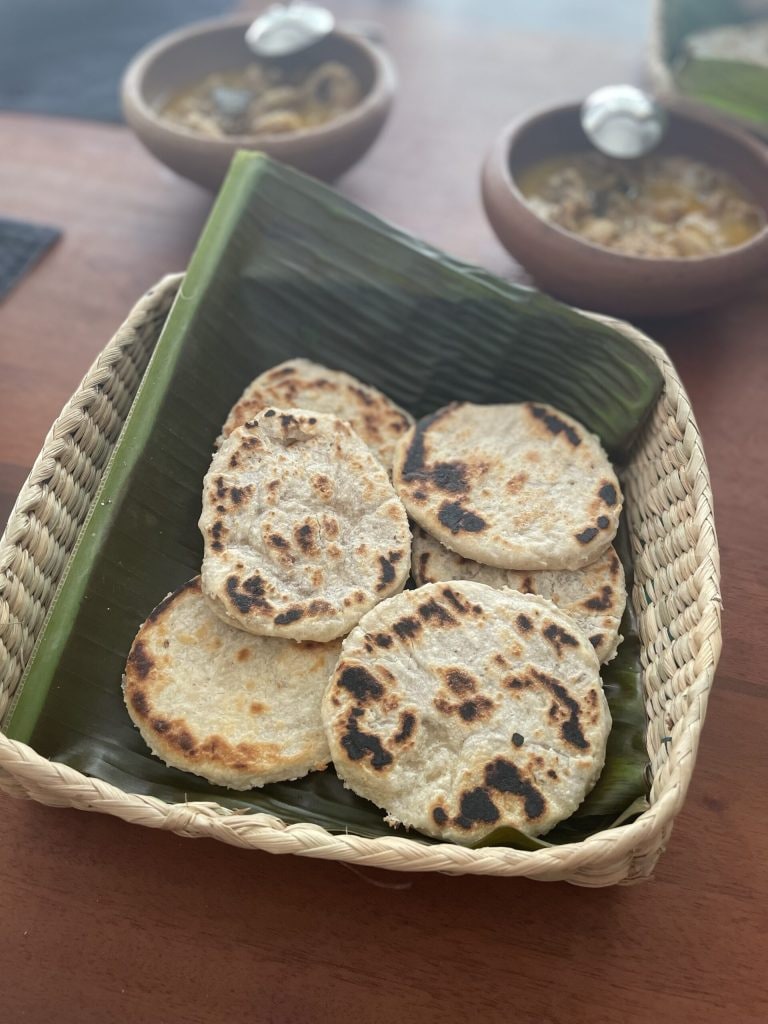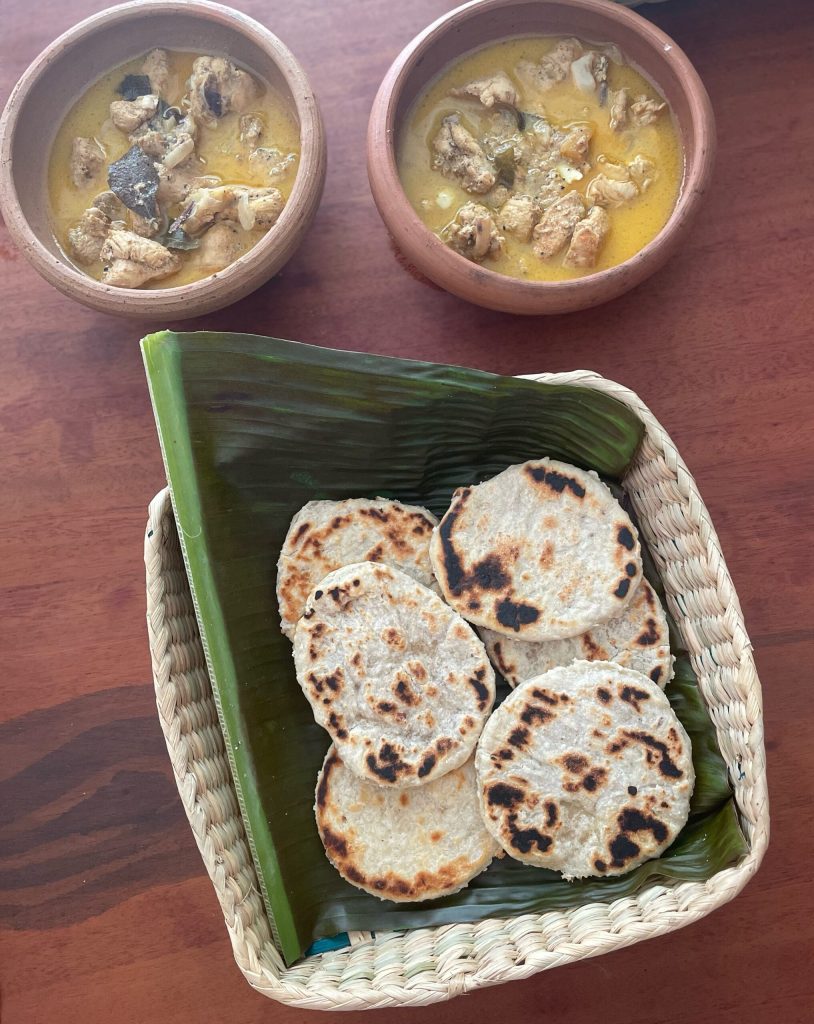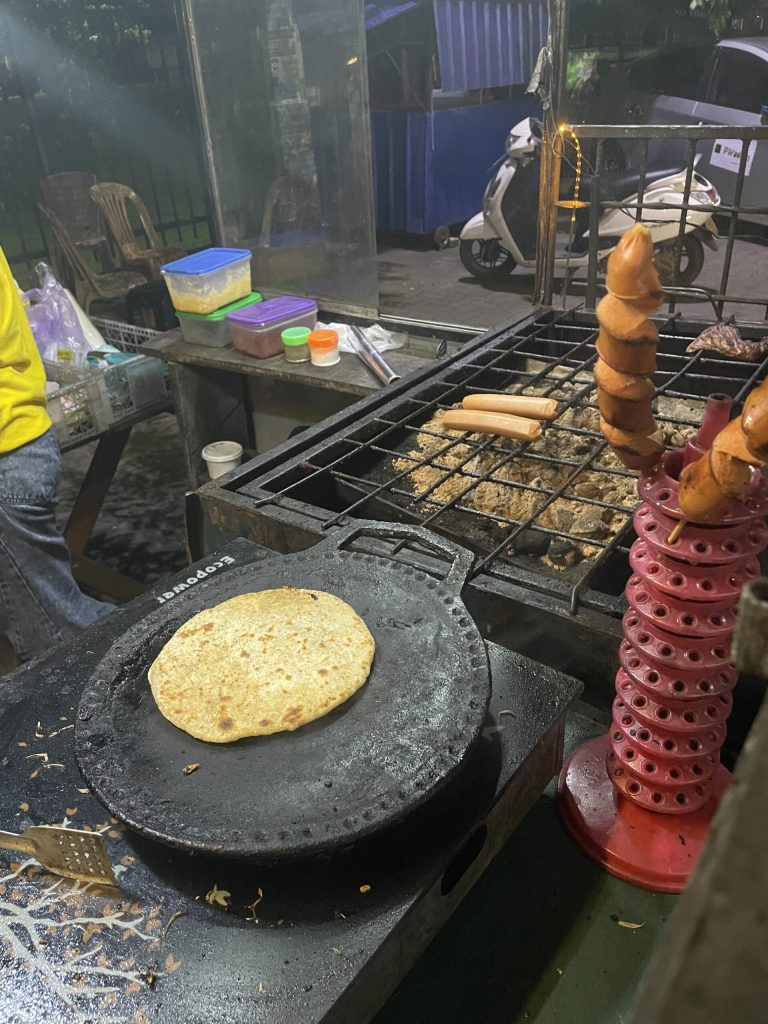The Pol roti (පොල් රොටි in Sinhala) literally means “coconut roti” — it is a type of unleavened bread made with shredded coconut + flour + water and coconut milk + salt.
It is a popular food for breakfast, with curry, sambol, or simply on its own, because it is quick to prepare and requires no leavening.
it shares some similarities with Indian roti, but has a distinct identity.
Pol Roti originates from Indian influence (roti/chapati), but is distinguished by the use of coconut and local ingredients.
It is savory and rustic, different from the sweet Thai roti and richer in flavor than the Indian chapati.
This is what they prepared for us every morning at Villa Nirvatana during our trip to Bentota in October 2025.

- Difficulty: Medium
- Cost: Very cheap
- Rest time: 10 Minutes
- Preparation time: 10 Minutes
- Portions: 8Pieces
- Cooking methods: Stovetop
- Cuisine: Sinhala
- Seasonality: All seasons
Ingredients
- 3 1/4 cups flour
- 1 3/4 cups grated coconut
- 1 3/4 oz red onion (or shallot)
- 1/2 cup water (warm)
- 1/2 cup coconut milk
- to taste salt
Steps
In a large bowl, mix the grated coconut with the chopped onion, chili (if used), and salt. Taste to adjust the salt.
Add the flour and mix well so that the coconut and onion are evenly distributed.
Gradually pour in the water + coconut milk, a little at a time, and mix with your hands until you get a soft, manageable, non-sticky dough.
Let the dough rest covered for a few minutes (5–10 minutes) to allow the moisture to distribute well.
Divide the dough into equal-sized balls (e.g. 6–8 pieces).
On a lightly floured surface, roll each ball out to a disk about 1/8–1/4 inch thick.
Heat a non-stick pan, hot but without oil (or with a light film if necessary). Cook the roti on one side until golden spots appear (about 1–2 minutes). Then flip and cook the other side until golden brown.
Repeat with all the rotis. If you want to keep them crisp, do not stack them immediately but let them cool slightly on a rack.
FAQ (Questions and Answers)
What is the difference between pol roti and Indian and Thai roti?
🇱🇰 Pol Roti (Sri Lanka)
Main ingredients: wheat flour + grated coconut (fresh or dried), onion, chili.
Characteristics: rustic, thick, not flaky, has a strong flavor due to coconut and onion.
Usage: accompanied by sambol, curry, or eggs; also for breakfast or street food.
Influences: yes, it originates culturally from Indian influences, but evolved in a Sinhala way with the addition of coconut, a staple in Sri Lankan cuisine.
🇮🇳 Indian Roti
Main ingredients: only whole wheat flour (atta) and water, sometimes oil or ghee.
Characteristics: thinner, softer, without coconut or onion. More “neutral” in taste.
Cooking: on tawa (griddle), often puffed to create an air pocket.
Usage: daily bread to scoop up curries and vegetables.
🇹🇭 Thai Roti
Main ingredient: white flour, eggs, sugar, often condensed milk or butter.
Characteristics: sweet or savory street food (often with banana, chocolate, or curry), very elastic and rolled out very thin, almost flaky.
Cooking: fried on a greased griddle, crispy on the outside and soft inside.
Origin: inspired by South Indian Muslim rotis, but adapted in a sweet-street food style.What is the traditional griddle for cooking pol roti called?
The traditional griddle used in Sri Lanka to cook Pol Roti is called a “Thachchiya” (තච්චිය) in Sinhala.
It is a flat metal griddle (usually iron or cast iron), similar to an Indian tava, which is heated directly on the fire or a stove. It has no borders and is perfect for cooking flatbreads like roti, hoppers, dosai, etc.
Today, many homes use a simple non-stick pan, but for an authentic result, the cast iron thachchiya is ideal: it retains heat and gives a slight crust to the roti.
In the photo, the street food stall in Ratnapura.

